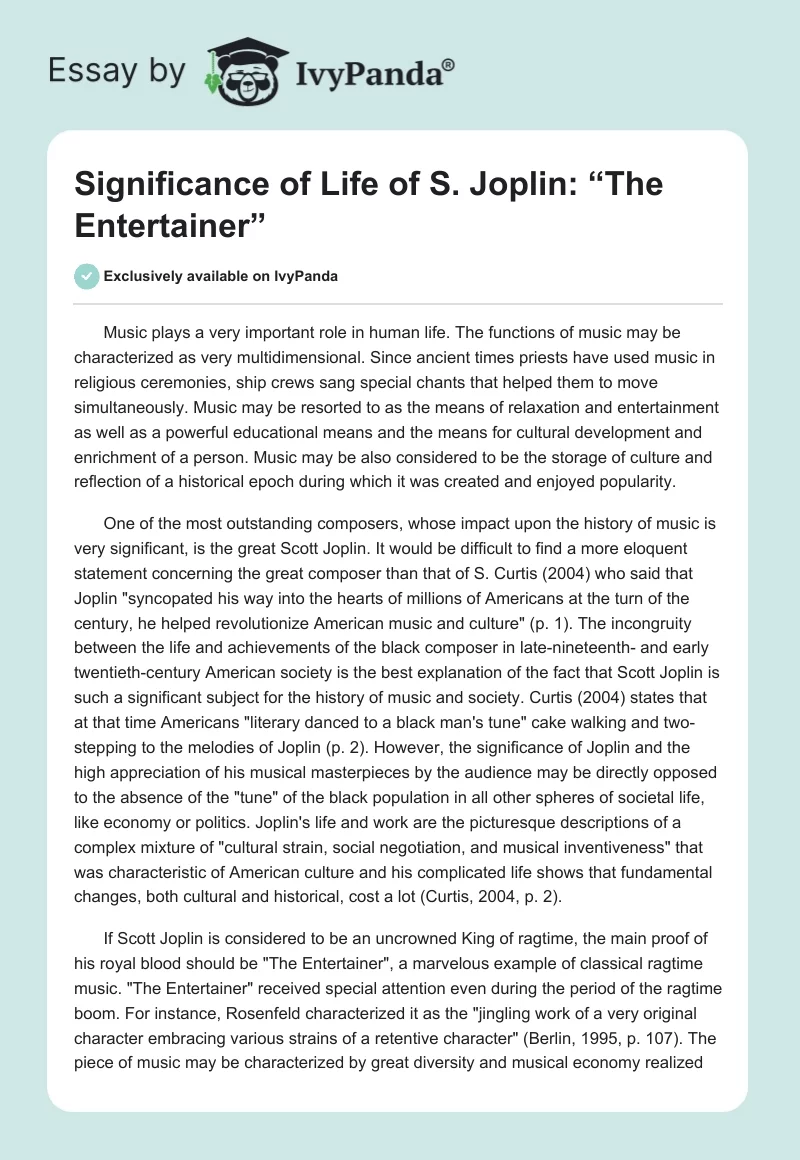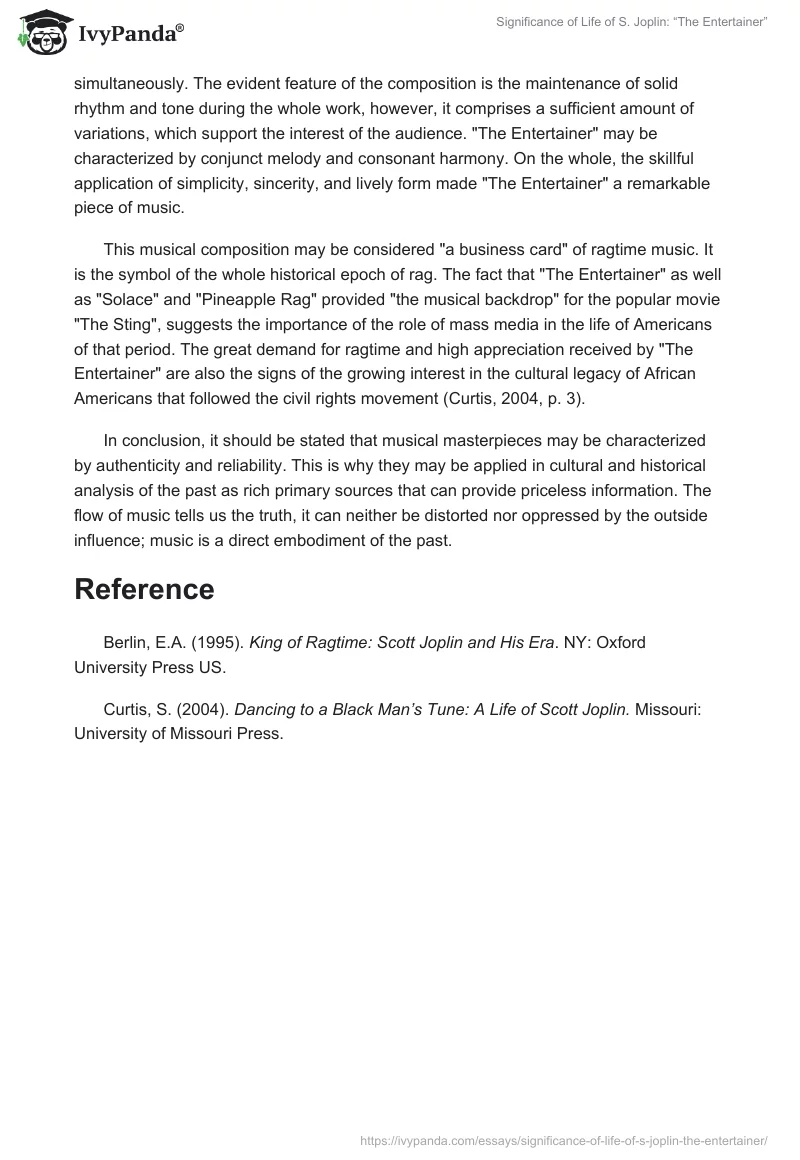Music plays a very important role in human life. The functions of music may be characterized as very multidimensional. Since ancient times priests have used music in religious ceremonies, ship crews sang special chants that helped them to move simultaneously. Music may be resorted to as the means of relaxation and entertainment as well as a powerful educational means and the means for cultural development and enrichment of a person. Music may be also considered to be the storage of culture and reflection of a historical epoch during which it was created and enjoyed popularity.
One of the most outstanding composers, whose impact upon the history of music is very significant, is the great Scott Joplin. It would be difficult to find a more eloquent statement concerning the great composer than that of S. Curtis (2004) who said that Joplin “syncopated his way into the hearts of millions of Americans at the turn of the century, he helped revolutionize American music and culture” (p. 1). The incongruity between the life and achievements of the black composer in late-nineteenth- and early twentieth-century American society is the best explanation of the fact that Scott Joplin is such a significant subject for the history of music and society. Curtis (2004) states that at that time Americans “literary danced to a black man’s tune” cake walking and two-stepping to the melodies of Joplin (p. 2). However, the significance of Joplin and the high appreciation of his musical masterpieces by the audience may be directly opposed to the absence of the “tune” of the black population in all other spheres of societal life, like economy or politics. Joplin’s life and work are the picturesque descriptions of a complex mixture of “cultural strain, social negotiation, and musical inventiveness” that was characteristic of American culture and his complicated life shows that fundamental changes, both cultural and historical, cost a lot (Curtis, 2004, p. 2).
If Scott Joplin is considered to be an uncrowned King of ragtime, the main proof of his royal blood should be “The Entertainer”, a marvelous example of classical ragtime music. “The Entertainer” received special attention even during the period of the ragtime boom. For instance, Rosenfeld characterized it as the “jingling work of a very original character embracing various strains of a retentive character” (Berlin, 1995, p. 107). The piece of music may be characterized by great diversity and musical economy realized simultaneously. The evident feature of the composition is the maintenance of solid rhythm and tone during the whole work, however, it comprises a sufficient amount of variations, which support the interest of the audience. “The Entertainer” may be characterized by conjunct melody and consonant harmony. On the whole, the skillful application of simplicity, sincerity, and lively form made “The Entertainer” a remarkable piece of music.
This musical composition may be considered “a business card” of ragtime music. It is the symbol of the whole historical epoch of rag. The fact that “The Entertainer” as well as “Solace” and “Pineapple Rag” provided “the musical backdrop” for the popular movie “The Sting”, suggests the importance of the role of mass media in the life of Americans of that period. The great demand for ragtime and high appreciation received by “The Entertainer” are also the signs of the growing interest in the cultural legacy of African Americans that followed the civil rights movement (Curtis, 2004, p. 3).
In conclusion, it should be stated that musical masterpieces may be characterized by authenticity and reliability. This is why they may be applied in cultural and historical analysis of the past as rich primary sources that can provide priceless information. The flow of music tells us the truth, it can neither be distorted nor oppressed by the outside influence; music is a direct embodiment of the past.
Reference
Berlin, E.A. (1995). King of Ragtime: Scott Joplin and His Era. NY: Oxford University Press US.
Curtis, S. (2004). Dancing to a Black Man’s Tune: A Life of Scott Joplin. Missouri: University of Missouri Press.


